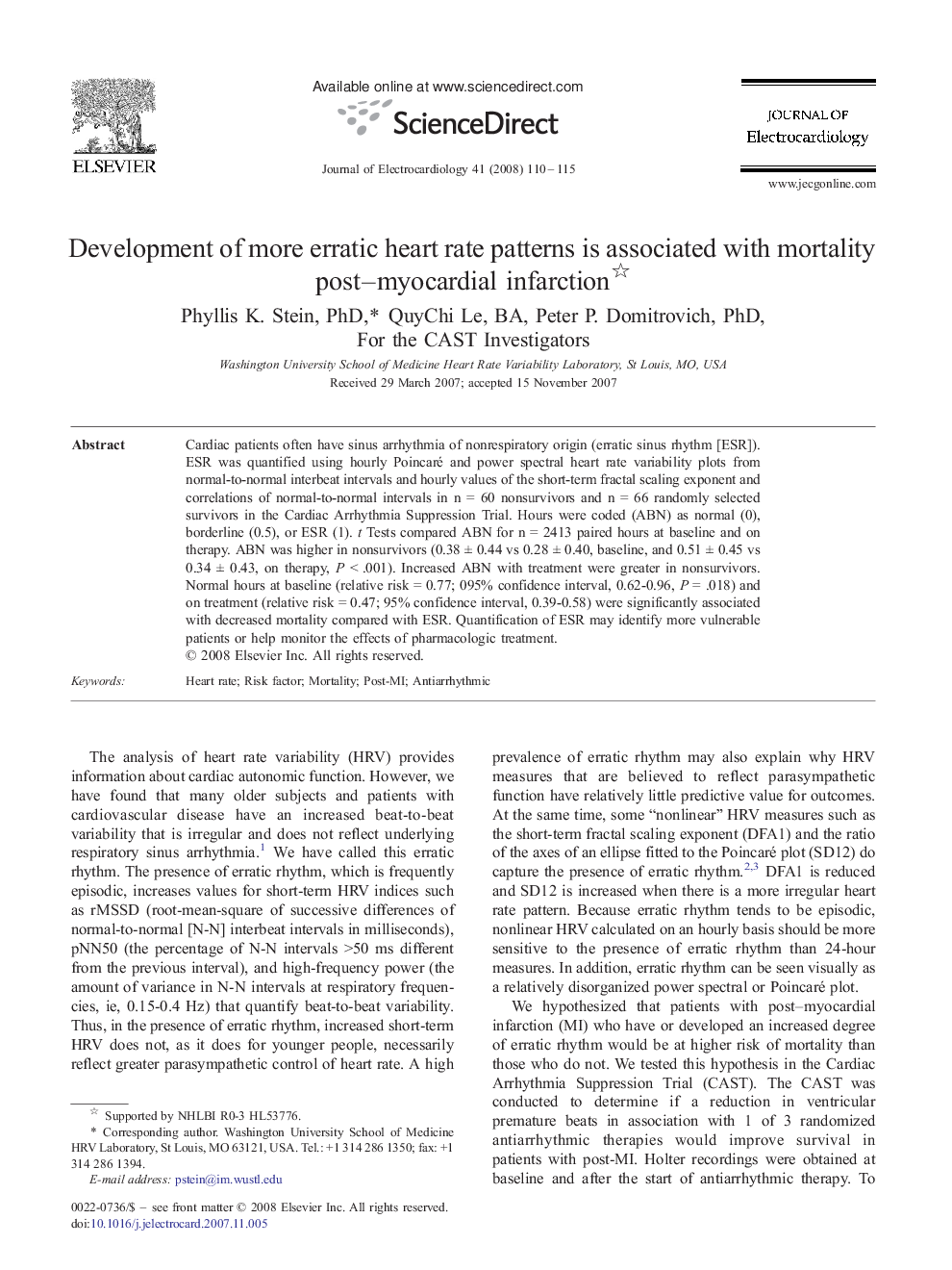| Article ID | Journal | Published Year | Pages | File Type |
|---|---|---|---|---|
| 2969401 | Journal of Electrocardiology | 2008 | 6 Pages |
Cardiac patients often have sinus arrhythmia of nonrespiratory origin (erratic sinus rhythm [ESR]). ESR was quantified using hourly Poincaré and power spectral heart rate variability plots from normal-to-normal interbeat intervals and hourly values of the short-term fractal scaling exponent and correlations of normal-to-normal intervals in n = 60 nonsurvivors and n = 66 randomly selected survivors in the Cardiac Arrhythmia Suppression Trial. Hours were coded (ABN) as normal (0), borderline (0.5), or ESR (1). t Tests compared ABN for n = 2413 paired hours at baseline and on therapy. ABN was higher in nonsurvivors (0.38 ± 0.44 vs 0.28 ± 0.40, baseline, and 0.51 ± 0.45 vs 0.34 ± 0.43, on therapy, P < .001). Increased ABN with treatment were greater in nonsurvivors. Normal hours at baseline (relative risk = 0.77; 095% confidence interval, 0.62-0.96, P = .018) and on treatment (relative risk = 0.47; 95% confidence interval, 0.39-0.58) were significantly associated with decreased mortality compared with ESR. Quantification of ESR may identify more vulnerable patients or help monitor the effects of pharmacologic treatment.
